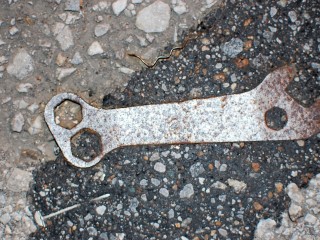Is there a faster CountIF

Multi tool use
Is there a faster CountIF
As the title says. Is there any function or VBA code which does the same function as a countif and is a lot faster. Currently in the middle of massive countif and it is just eating up my CPU.
It is just a basic countif inside the worksheet. Not in VBA. =countif(X:X,Y) However the lists are massive. So both lists are around 100,000~ rows
=countif(X:X,Y)
IF
Range.SpecialCells(xlVisible).Count
xlVisible
All I am trying to do is to see if x list is in y list. I just want any zeros. So not sure if I can split it that way
– Sam
Apr 30 '15 at 15:41
It is just a simple workbook function inside the actual worksheet of
=countif(X:X,y) But the lists are huge– Sam
Apr 30 '15 at 15:45
=countif(X:X,y)
Are you trying to get the number of values that appear in both lists?
– Tom
Apr 30 '15 at 15:48
I am trying to get a count of how many times something from list Y appears in the List X
– Sam
Apr 30 '15 at 15:50
2 Answers
2
If you can do without a count of the occurances and simply wish to check if the value x exists in the column of y's, then returning a boolean TRUE or FALSE with the ISNUMBER function evaluating a MATCH function lookup will greatly speed up the process.
=ISNUMBER(MATCH(S1, Y:Y, 0))
Fill down as necessary to catch all returns. Sort and/or filter the returned values to tabulate results.
Addendum:
Apparently there is. The huge improvement in the MATCH function calculation times over the COUNTIF function made me wonder if MATCH couldn't be put into a loop, advancing the first cell in its lookup_array parameter to the previously returned row number plus one until there were no more matches. Additionally, subsequent MATCh calls to lookup the same number (increasing the count) could be made to increasingly smaller lookup_array cell ranges by resizing (shrinking) the height of the column by the returned row number as well. If the processed values and their counts were stored as keys and items in a scripting dictionary, duplicate values could be instantly resolved without processing a count.
Sub formula_countif_test()
Dim tmr As Double
appOFF
tmr = Timer
With Sheet2.Cells(1, 1).CurrentRegion
With .Offset(1, 0).Resize(.Rows.Count - 1, .Columns.Count) 'skip header
.Cells(1, 3).Resize(.Rows.Count, 1).FormulaR1C1 = _
"=countif(c1, rc2)" 'no need for calculate when blocking in formulas like this
End With
End With
Debug.Print "COUNTIF formula: " & Timer - tmr
appON
End Sub
Sub formula_match_test()
Dim rw As Long, mrw As Long, tmr As Double, vKEY As Variant
'the following requires Tools, References, Microsoft Scripting Dictionary
Dim dVALs As New Scripting.dictionary
dVALs.CompareMode = vbBinaryCompare 'vbtextcompare for non-case sensitive
appOFF
tmr = Timer
With Sheet2.Cells(1, 1).CurrentRegion
With .Offset(1, 0).Resize(.Rows.Count - 1, .Columns.Count) 'skip header
For rw = 1 To .Rows.Count
vKEY = .Cells(rw, 2).Value2
If Not dVALs.Exists(vKEY) Then
dVALs.Add Key:=vKEY, _
Item:=Abs(IsNumeric(Application.Match(vKEY, .Columns(1), 0)))
If CBool(dVALs.Item(vKEY)) Then
mrw = 0: dVALs.Item(vKEY) = 0
Do While IsNumeric(Application.Match(vKEY, .Columns(1).Offset(mrw, 0).Resize(.Rows.Count - mrw + 1, 1), 0))
mrw = mrw + Application.Match(vKEY, .Columns(1).Offset(mrw, 0).Resize(.Rows.Count - mrw + 1, 1), 0)
dVALs.Item(vKEY) = CLng(dVALs.Item(vKEY)) + 1
Loop
End If
.Cells(rw, 3) = CLng(dVALs.Item(vKEY))
Else
.Cells(rw, 3) = CLng(dVALs.Item(vKEY))
End If
Next rw
End With
End With
Debug.Print "MATCH formula: " & Timer - tmr
dVALs.RemoveAll: Set dVALs = Nothing
appON
End Sub
Sub appON(Optional ws As Worksheet)
Application.ScreenUpdating = True
Application.EnableEvents = True
Application.Calculation = xlCalculationAutomatic
End Sub
Sub appOFF(Optional ws As Worksheet)
Application.ScreenUpdating = False
Application.EnableEvents = False
Application.Calculation = xlCalculationManual
End Sub

I used 10K rows with columns A and B filled by RANDBETWEEN(1, 999) then copied and pasted as values.
RANDBETWEEN(1, 999)
Elapsed times:
Test 1¹ - 10K rows × 2 columns filled with RANDBETWEEN(1, 999)
COUNTIF formula: 15.488 seconds
MATCH formula: 1.592 seconds
Test 2² - 10K rows × 2 columns filled with RANDBETWEEN(1, 99999)
COUNTIF formula: 14.722 seconds
MATCH formula: 3.484 seconds
I also copied the values from the COUNTIF formula into another column and compared them to the ones returned by the coded MATCH function. They were identical across the 10K rows.
¹ More multiples; less zero counts
² More zero counts, less multiples
While the nature of the data clearly makes a significant difference, the coded MATCH function outperformed the native COUNTIF worksheet function every time.
Don't forget the VBE's Tools ► References ► Microsoft Scripting Dictionary.
Try sumproduct(countif(x:x,y:y))
It’s slightly faster but by how much I am not sure.
Also let us know if you have found a better option out there.
sumproduct(countif(x:x,y:y))
By clicking "Post Your Answer", you acknowledge that you have read our updated terms of service, privacy policy and cookie policy, and that your continued use of the website is subject to these policies.




Not sure if it's faster or not, but you could try filtering the column on the
IFpart, then getRange.SpecialCells(xlVisible).Count. Note: not 100% certainxlVisibleis the proper enum, but you get the idea.– FreeMan
Apr 30 '15 at 15:39